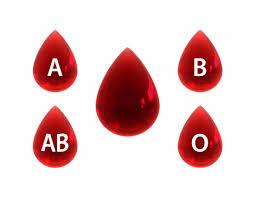Understand feline neonatal isoerythrolysis and blood group incompatibility for breeding and blood transfusions

Feline neonatal isoerythrolysis and blood groups is a condition that affects mostly kittens and foals, but has also been seen in puppies. We will focus on kittens, and particularly British Shorthair kittens: most of this information is contained in another article on Fading Kitten Syndrome, but we get so many questions on feline blood group incompatibility that we are reproducing it here in an article of its own.
Feline blood groups
There are 3 feline blood groups:
-
A
-
AB
-
b
There is currently no test to distinguish between A and AB, and little is known about blood group AB. Blood group A and AB are therefore currently dealt with together and referred to as blood group A or AB.
Feline Blood group tests
We use Langford Laboratories to blood group our cats. We simply take a buccal swab and rub the inside of their cheek with it. You must make sure the cat has not eaten for at least 30 minutes before you take the swab. We then send it off to Langford’s in a pre-paid postage envelope. It is very easy, and the prices are reasonable.
The blood group is then reported to us as either:
-
Blood group A or AB not carrying b
-
Blood group A or AB carrying b
-
Blood group b
So you can see that there are 3 possible alternatives. It is rather unhelpful that one blood group uses a capitalised ‘B’ and another, totally different group uses a lower case ‘b’ - it gets confusing! Pay attention to whether the letters used are upper or lower case.
Blood group incompatibility

Blood group incompatibility is relevant in two situations: the first is if you are breeding cats, or have an accidental pregnancy. The second is if your cat ever needs a blood transfusion.
Essentially, there are high levels of antibodies in group b blood that attack and kill the cells of a cat that has blood group A blood. There may be low levels of antibodies in blood group A blood that attack the cells of a blood group B, but these exist at much lower levels.
Feline Neonatal Isoerythrolysis
During the first 48 hours of a kitten’s life, their mother produces colostrum, which is a special type of milk that is full of antibodies so that the benefits of her established immune system can be passed on to her kittens. During this time, the lining of the kittens’ bowels is especially open to these antibodies passing through it, and into the kittens’ systems.
This all works very well, and is an essential part of creating and strengthening the kittens’ immune systems.
However, where there is blood group incompatibility the antibodies from the mother pass through the intestinal lining of the kitten, and instead of strengthening their immune system, the antibodies start to attack the cells of the kitten. This is Neonatal Isoerythrolysis, and it is fatal. It is therefore essential to blood group your cats before you mate them. In some cat breeds, there is only one blood group, but in British Shorthair cats around 60% have blood group A and 40% have blood group B.
The symptoms are feline neonatal isoerythrolysis are very distressing: the tips of the kittens' bodies start to necrotise as the cells die, so the tips of their bodies become black and they fade away.
Safe matings/compatible blood groups
The following matings are perfectly safe and there is no risk of neonatal isoerythrolysis:
-
Blood group A or AB not carrying b female to blood group A or AB not carrying b male
-
Blood group A or AB carrying b female to blood group A or AB not carrying b male
-
Blood group A or AB not carrying b female to blood group A or Ab carrying b male
-
Blood group A or AB not carrying b female to blood group b male
-
Blood group b female to blood group b male
Probably safe matings
The following matings are considered by most to be safe, but theoretically there is a slim chance of feline neonatal isoerythrolysis. Opinion is therefore divided on the following matings:
-
Blood group A or AB carrying b female to blood group A or AB carrying b male
This mating can produce blood group b kittens (25% chance). Many successful litters have been bred from this blood grouping, with no problems encountered, but in theory there could be an issue.
Unsafe matings/incompatible blood groups

The following matings are unsafe and should not be permitted, because they will almost certainly lead to all or some of the kittens suffering from feline neonatal isoerythrolysis:
-
Blood group b female to blood group A or AB carrying b male
-
Blood group b female to blood group A or AB not carrying b male
**Never put a blood group b queen to a blood group A or AB boy** If a mating of these blood groups has occured, please read on to find out how to deal with this and save the kittens.
Blood group genetics
The determining factor in whether a mating is safe or not depends on whether the mother’s blood group will be incompatible with the kittens’ blood groups. Blood group A or AB is dominant to blood group b, which is why a cat can be blood group A or AB carrying b or not carrying b. Where the cat is described as carrying b, the cat has one gene for blood group A or AB and a second for blood group b. Because blood group A or AB is dominant, they are still blood group A or AB but they also carry blood group b. This is why an A or AB female to a b male is ok - because all of the kittens will be blood group A or AB carrying b, which means that mother and kittens are all blood group A.
If you become aware that a mating has incompatible blood groups after it has happened, don’t panic. There are 2 things you can do:
-
When the kittens are born, take a little blood from each placenta and use a home test to determine what blood group they are. If there blood group is compatible with their mother’s, you can leave them with her. If their blood group is not compatible with their mother’s, you must remove them from her before they suckle, and not return them for 48-72 hours.
-
When the kittens are born, once mum has bitten through their placentas, remove them from her immediately. You will need to care for them yourself for the first 48-72 hours.
If you are removing kittens from their mother here are some tips:
-
You can purchase colostrum and administer this yourself to strengthen their immune systems - KittyStim, available from most good vets and various places online including Viovet.
-
If you have another queen with a compatible blood group, you can let her adopt the kittens for the time necessary, and then return them to their mum
-
We have heard that someone cut a pair of tights and put it on mum as a body stocking so she could still care for the kitties, except for feeding them
-
Remember to keep the kittens at the correct temperature and feed them correctly
Read more...
- the Golden British Shorthair
- How many kittens is my cat having
- Swimmer syndrome and how to fix it
- are you over vaccinating your cat?
We are expert breeders of British Shorthair kittens, located near Chester and Wrexham, and within easy driving distance of Manchester, Liverpool and Birmingham.